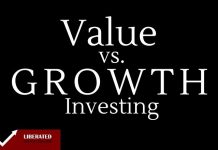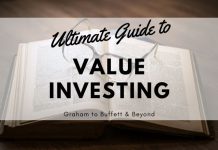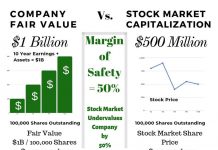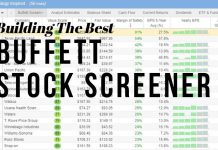★ Investing Strategy Research & Guides ★
- Growth Investing Strategies
- 2025 Investment Outlook: What Wall Street Predicts
- How to Screen for Stocks
- 5 Time-Tested Ways to Profit in Stocks
- 7 Top Growth Stock Picking Services Tested
- High Alpha Strategies
- Beta Investing & Trading
- CANSLIM Growth Strategy Investing
- Forecasting Market Returns: 154 Year s of Data
- Cyclical Investing
- Finding Top Growth Stocks
- 5 Smart Ways To Invest Blue Chips
- Sector Investing Guide
- Sector Rotation: Is it Profitable?
- Value Investing – Ultimate Guide
- Dividend & Income Investing Mastery
- Dividend Investing: 10 Pro Tips
- 3 High Yield Dividend Strategies
- 4 Dividend Screening Strategies Tested
- 7 Dividend & Value Stock Strategies
- 5 Dividend Growth Stock Strategies
- Maximizing Dividend Yield
- Expert Dividend Strategies
- Dividend Reinvestment
- Dividend Reinvestment Plans
- Preferred Stock Dividends
- Qualified Dividends
- Index ETF Investing
- Alternative Investments: Gold
- Portfolio Management
- Next Section – Books >>
Value Investing
Value investing is an investment strategy that involves picking stocks that are trading for less than their intrinsic value. Intrinsic value is the actual value of a company, based on its earnings power and growth potential. Value investors believe that by paying less for a stock than its intrinsic value, they are getting a bargain that will eventually pay off.
Which is Better Value or Growth Stocks? I Test The Data!
Our data analysis for the past decade shows that growth stocks have outperformed value stocks. Growth investing has shown a remarkable return rate of 523%, while value investing has yielded 247%.
Mastering Value Investing: A Complete Strategy Guide
Value investing is an investment strategy focused on buying stocks trading at a discount relative to their intrinsic or fair value. Academic research shows value investing generates lower risk and higher long-term returns than dividend and growth investing.
How to Calculate & Invest Using Buffett’s Margin of Safety
To calculate the margin of safety, estimate the next ten years of discounted cash flow (DCF) and divide it by the number of shares outstanding to get the intrinsic value. The difference between the intrinsic value and the stock price is the margin of safety percentage.
13 Time-Tested Financial Ratios To Find Undervalued Stocks
To find undervalued stocks, use established financial ratios such as discounted cash flow, the margin of safety, PEG, price to book, or the price to Graham number. Each ratio provides a unique insight into a company to determine if it is undervalued.
Using the Buffett Indicator to Understand Market Valuation
The Buffett Indicator helps gauge stock market valuation by dividing the total market capitalization by GDP, offering a macroeconomic perspective on market value.
Building the Best Buffett Stock Screener for Value Investing
The best Buffett and Graham stock screener is Stock Rover, which provides eight fair value, intrinsic value, and forward cash flow calculations to help you build a great portfolio.





